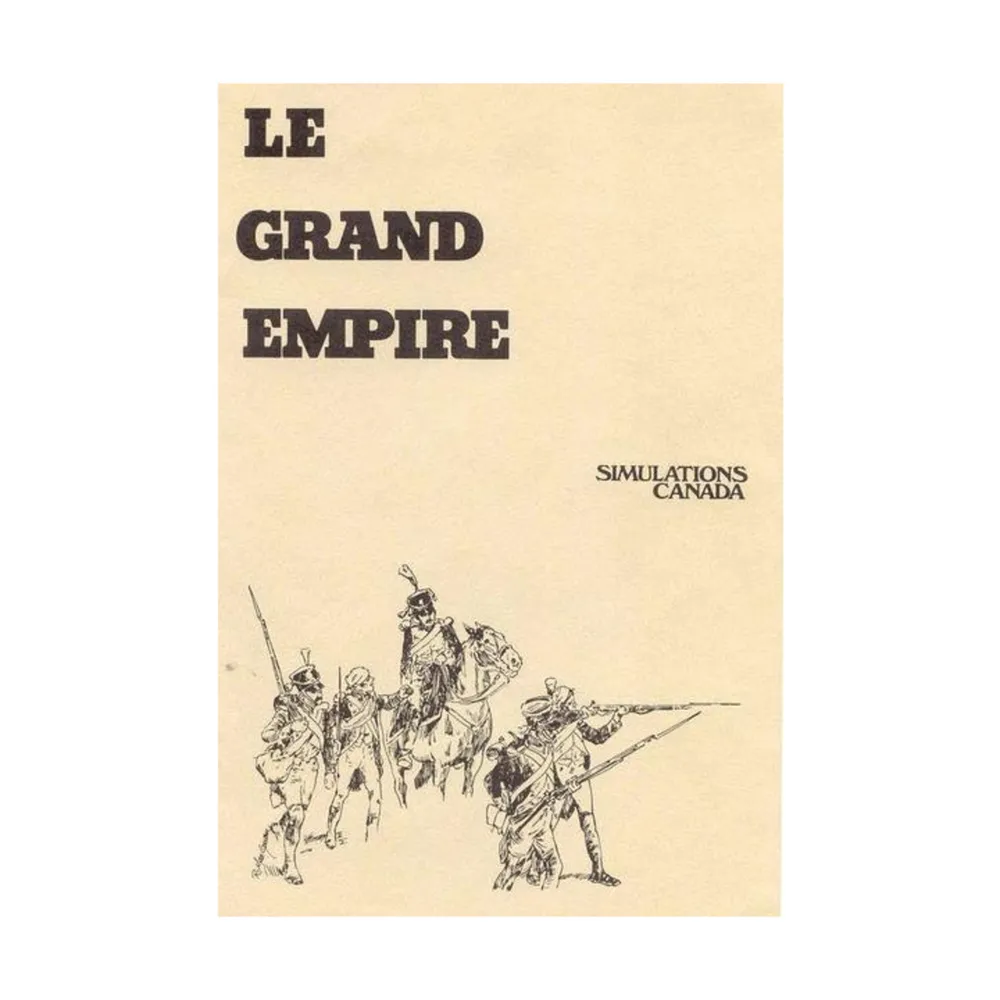Le Grand Empire (1978)
Le Grand Empire
“Le Grand Empire” is a strategic board wargame that simulates the Napoleonic wars from 1800 to 1815. The game was published by Simulations Canada in 1978 and covers two maps, one for Europe and the other for North Africa. The game aims to provide a strategic-level simulation of the Napoleonic period, allowing players to experience the challenges and decisions faced by the major powers during this time.
Why is Le Grand Empire Popular?
“Le Grand Empire” is popular and significant for several reasons:
– Strategic Simulation: The game offers a strategic simulation of the Napoleonic wars, allowing players to experience the challenges and decisions faced by the major powers during this time.
– Historical Accuracy: The game covers a specific period in history, from 1800 to 1815, and provides a detailed and realistic representation of the armies and territories involved in the conflicts.
– Two Maps: The game includes two maps, one for Europe and the other for North Africa, providing a comprehensive and immersive experience for players.
Game Components of Le Grand Empire
How To Setup Le Grand Empire
To set up the game, players place the map board, distribute the military units according to the initial setup rules, and determine the starting supplies for each player. The game can be played with two players, where one controls France and the other controls England and Austria, or in a multi-player format where each player controls a major European power. Neutral countries are placed on the board and remain neutral until conquered.
Gameplay Mechanics and Game Objective
Mechanics
Game Objective
– France wins by controlling Paris and either London, Moscow, or Bombay, with an additional win condition if Alexandria is taken.
– England/Austria wins by preventing a French victory or draw.
– Players aim to expand their territories and achieve dominance through alliances and military conquest.
Player Experience
Playing **Le Grand Empire** offers a simplified yet engaging experience of Napoleonic warfare. The game is designed to be “easy to play” with straightforward rules, making it accessible to new players. However, critics have noted that the game lacks historical accuracy and depth, particularly in its combat system and the handling of neutral countries.
Pros
Cons
Personal Thoughts on Le Grand Empire
**Le Grand Empire** is suited for players looking for a light, introductory wargame with a Napoleonic theme. It is not ideal for those seeking a deeply complex or historically accurate simulation. The game’s simplicity makes it a “beer & pretzels” type of game, enjoyable for a casual evening but lacking the depth and realism that hardcore wargamers might desire.
We are supported by our audience. When you purchase through links on our site, we may earn an affiliate commission, at no extra cost for you. Learn more.

